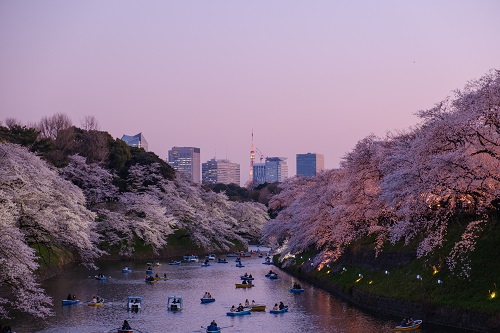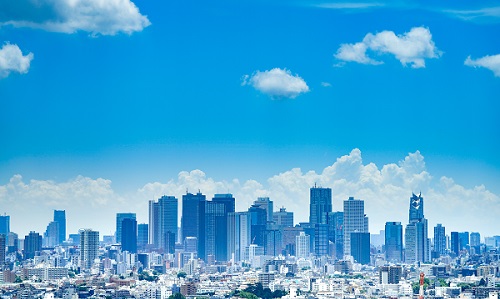If you are an expat living in Japan and looking to have a baby, then it’s worth considering what kind of maternity care is available. The good news is that both public and private healthcare in the country is excellent.Unfortunately, although public health insurance is compulsory if you are working in Japan, it does not cover maternity care. You can choose to give birth in a public hospital, but you will need to pay a fee. Alternatively, you can choose to give birth in a private clinic.
This article will take you through some of your options and give you a good idea about how much you can expect to pay.
How to decide on a birth plan
A birth plan is a list of what you would like to have happen during labour and afterwards. It is written so that your doctor knows what your wishes and expectations are. When writing your birth plan, you may want to consider the following questions:
• Where do you want to give birth?
• Who do you want to have with you (e.g. your partner)?
• What kind of birth do you want (e.g. vaginal birth or a Caesarian)?
• Do you need any birthing aids?
• Do you want pain relief, and if so, what kind?
• What kind of birthing environment would you prefer?
Japan does offer C-section births, so you can discuss this with your midwife or obstetrician if this is a method you’d like to consider. C-sections account for around 17% of births, which is lower than in some other developed nations.
Doulas are available across the country, but you will also find yourself working closely with your midwife and your doctor. You may be offered a traditional room, containing mats rather than beds. You should be given a choice as to your birthing position. There are some reports that Japanese doctors – as opposed to midwives – overuse episiotomies, so if you are opposed to this practice, you should make sure you let them know. Midwife-led deliveries tend to take longer than doctor-led ones, but the outcomes in Japan are all very positive.
Water birthing is not a common custom in Japan.

There is a custom known as satogaeri shussan (里帰り出産), in which a woman returns to their mother’s house either to give birth or with their baby after they have given birth in hospital. However, despite this, the rate of home births remains low in Japan, with over half of births taking place in hospitals.
If your pregnancy is deemed to be high risk, for any reason, you may find yourself placed in a university hospital, which will usually have state of the art facilities.
Around 5% of midwives in Japan work in the private sector, and birth is offered at your home or in a maternity clinic if your pregnancy is deemed to be low-risk. Midwives are not allowed to perform medical interventions.
Expats report that maternity homes are of an excellent quality, although there are also reports that they are centred around the baby rather than the mother. This can occasionally lead to some conflict with mothers who are used to a more balanced approach.
Some mothers also report that pain is supposed, in Japanese culture, to be part of the birthing process. Therefore, if you want pain relief, make sure that you establish this early on in your relationship with your midwife and obstetrician. The use of pain relief has been reported as being much lower in Japan than in the US, for example.
Japanese maternity care
As above, national insurance does not cover maternity care. The government offers “maternity vouchers” (妊産婦健康診査費用補助券, ninsanpu-hoken-hiyō-hojoken) to mothers-to-be; check with your doctor to see if you will be eligible for these discount vouchers.
Once your pregnancy has been confirmed, you must then submit a “pregnancy notification form” (妊娠届出書, ninshin-todokeshutsu-sho) to your local city health department, and you will receive a pack, which will include your vouchers and the Maternity and Children Health Handbook (母子健康手帳, boshi-kenkō-techō). English versions of this are available, and you will need to take it to all your appointments.
Once all of the above has been done, you can start making appointments for your regular pregnancy check-ups (妊婦健康診断, ninshin-kenkō-shindan). Your maternity vouchers will cover part of the cost, but you will need to pay some of the fee yourself. Usually, you will receive 14 check ups: monthly, fortnightly, and then weekly, as your pregnancy advances.
Japanese maternal and infant mortality rates are very low. Japan is one of the safest countries in the world in which to give birth. However, there are some different expectations in the Japanese maternity system, and it’s worth being aware of these.
For example, expats have reported an issue around weight gain. Western mothers tend to be taller/larger than Japanese women, and some expats have said that they have had struggles with Japanese medical personnel over the question of gaining ‘too much’ weight, when the weight increase in question is well within Western maternity standards.

It’s important to bear in mind that you are giving birth in a different culture. You may therefore encounter some traditional beliefs that you are not familiar with. For example, some expats report being told to keep their bump covered up.
This aside, however, maternity care in Japan is very good. There is a wide range of options, as above, from home births to maternity homes or public hospitals. Once your pregnancy has been confirmed, you should make a reservation for the approximate delivery date with your local maternity unit. Your relatives and partner will usually be allowed to attend the birth if you choose a hospital, but maternity homes may be female-only.
You are likely to be kept in hospital for five to eight days; post-natal care is generous. Overall costs tend to run from US$5000 to US$6000.
Maternity leave in Japan runs from six weeks prior to the expected birth date to eight weeks after giving birth.
The K-A International Mothers in Japan is an online community for overseas mothers, and you may find this helpful.
Will the baby be a Japanese citizen?
If your baby is born in Japan and either you or your partner is a Japanese national, then they will be granted Japanese citizenship.

